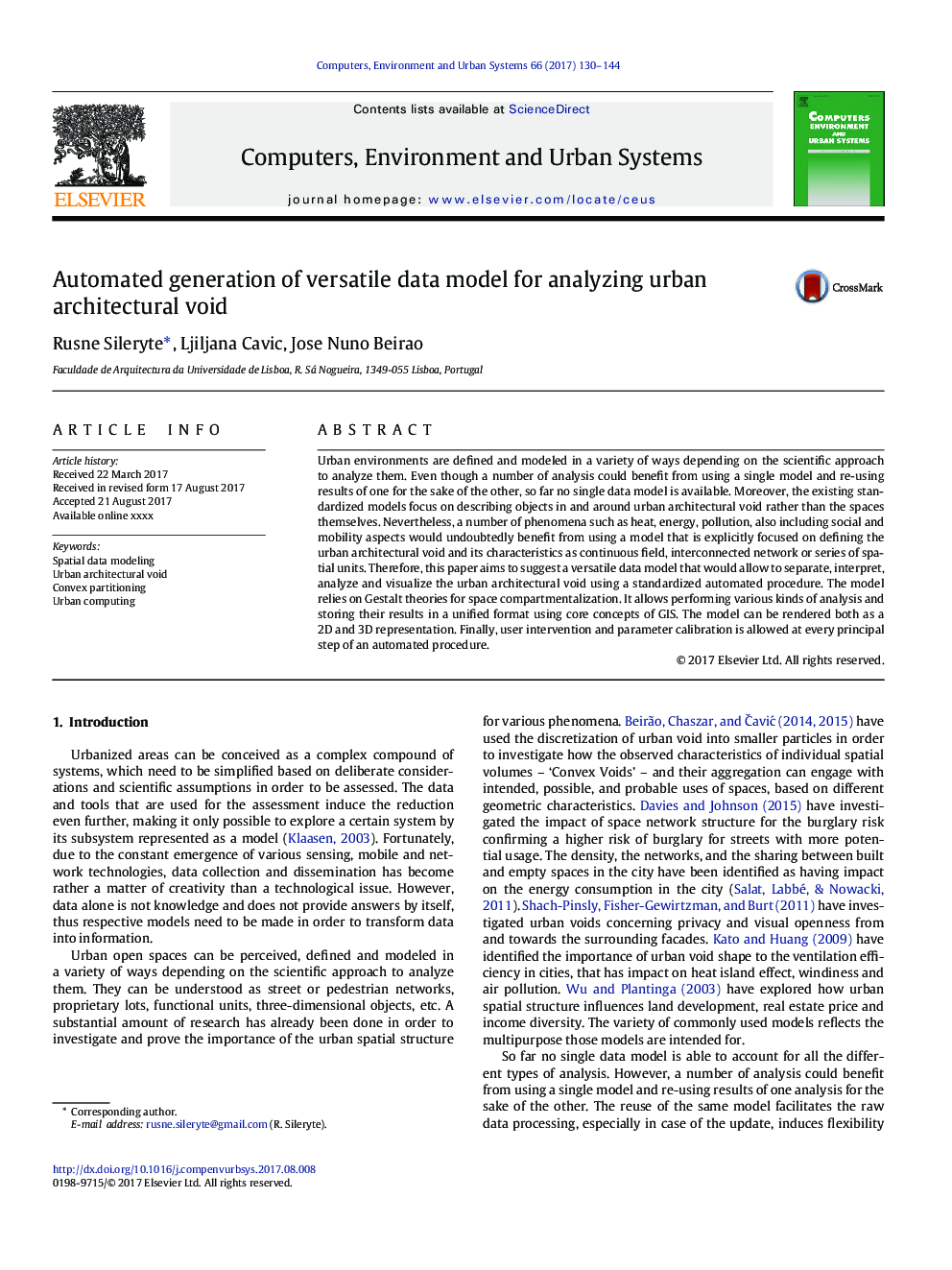| Article ID | Journal | Published Year | Pages | File Type |
|---|---|---|---|---|
| 4965206 | Computers, Environment and Urban Systems | 2017 | 15 Pages |
Abstract
Urban environments are defined and modeled in a variety of ways depending on the scientific approach to analyze them. Even though a number of analysis could benefit from using a single model and re-using results of one for the sake of the other, so far no single data model is available. Moreover, the existing standardized models focus on describing objects in and around urban architectural void rather than the spaces themselves. Nevertheless, a number of phenomena such as heat, energy, pollution, also including social and mobility aspects would undoubtedly benefit from using a model that is explicitly focused on defining the urban architectural void and its characteristics as continuous field, interconnected network or series of spatial units. Therefore, this paper aims to suggest a versatile data model that would allow to separate, interpret, analyze and visualize the urban architectural void using a standardized automated procedure. The model relies on Gestalt theories for space compartmentalization. It allows performing various kinds of analysis and storing their results in a unified format using core concepts of GIS. The model can be rendered both as a 2D and 3D representation. Finally, user intervention and parameter calibration is allowed at every principal step of an automated procedure.
Keywords
Related Topics
Physical Sciences and Engineering
Computer Science
Computer Science Applications
Authors
Rusne Sileryte, Ljiljana Cavic, Jose Nuno Beirao,
